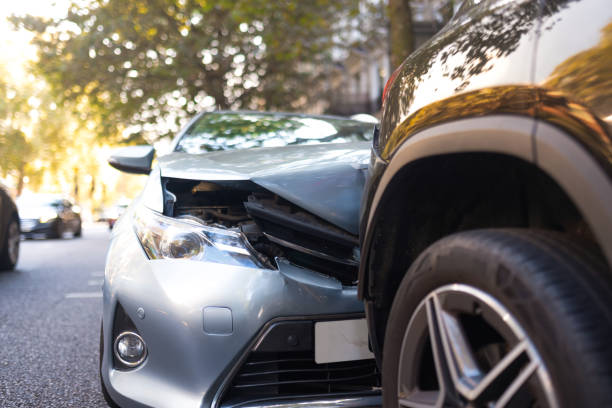
Understanding Rear-End Collisions
Rear-end collisions are one of the most common types of car accidents in the United States. They occur when a vehicle crashes into the back of another vehicle, often resulting in whiplash, vehicle damage, and sometimes serious injuries. While many people assume the driver in the rear is always at fault, the reality is more complex. Understanding your rights and the circumstances that contribute to these accidents is crucial.
Common Causes of Rear-End Collisions
Although the driver behind often bears some responsibility, various factors can shift or share liability:
- Sudden stops due to traffic hazards – If the driver in front stops abruptly due to road hazards or emergency situations, fault may not rest entirely on the rear driver.
- Mechanical failures – Brake malfunctions or other vehicle issues can prevent timely stopping, reducing the rear driver’s liability.
- Distracted or impaired driving – While these are common factors, even a distracted driver may share fault if the front driver behaved unpredictably.
- Unsafe lane changes or turns – A front driver swerving or changing lanes without signaling can contribute to the collision.
The Consequences of a Rear-End Collision
Even “minor” rear-end collisions can have long-lasting consequences:
- Whiplash and neck injuries – These injuries may not appear immediately but can lead to chronic pain and mobility issues.
- Back and spinal injuries – Compression or herniated discs can require long-term treatment.
- Emotional trauma – Accidents often trigger anxiety or fear related to driving.
- Vehicle damage – Repair costs can be substantial, especially if the collision causes secondary damage.
Determining Fault in Rear-End Accidents
It’s essential to understand that liability is not always straightforward. Investigations may consider:
- Police reports and traffic citations
- Dashcam or traffic camera footage
- Eyewitness statements
- Accident reconstruction experts
Even if the collision seems minor, having proper documentation is critical for insurance claims and potential legal action.
Seeking Legal Assistance
If you’ve been involved in a rear-end collision and are unsure about fault, consulting with an experienced car accident attorney can make a significant difference. Legal professionals can:
- Assess the circumstances of your collision
- Gather evidence to support your claim
- Negotiate with insurance companies to maximize compensation
- Advocate for your rights if the case goes to court
The Buckeye Law Group Difference
At Buckeye Law Group, we understand the challenges families face after a rear-end collision. From medical expenses and lost wages to emotional distress, the aftermath of an accident can be overwhelming. Our dedicated team fights to ensure you receive the compensation you deserve while holding negligent drivers accountable.
Contact us today to learn how we can help you navigate your legal options after a rear-end collision: Contact Buckeye Law Group.
Filing a Lawsuit for Missed or Delayed Diagnosis in Ohio
When doctors fail to diagnose a serious illness in time, the results can be devastating—especially when early detection could have meant the difference between recovery and tragedy. In Ohio, patients
Why Your Doctor Didn’t Listen—And How to Fight Back
One of the most frustrating and dangerous experiences a patient can face is being ignored by their doctor. Whether you reported symptoms that were dismissed, asked for tests that were
Suing for Delayed Cancer Diagnosis: What Families Should Know
When cancer goes undetected due to medical negligence, it doesn’t just affect the patient—it impacts the entire family. Missed or delayed diagnoses often mean more invasive treatments, reduced survival chances,
How Late Detection Impacts Cancer Treatment Outcomes
When cancer is caught early, patients often have a wide range of treatment options and a significantly better chance of recovery. However, when doctors fail to detect cancer in its
When Doctors Miss the Warning Signs of Spinal Infections
Spinal infections are among the most dangerous and time-sensitive medical conditions a patient can face. When caught early, most can be treated successfully with antibiotics or minor surgical intervention. But
Legal Help for Victims of Delayed Epidural Abscess Diagnosis
An epidural abscess is a serious infection that forms in the space between the bones of the spine and the protective membranes surrounding the spinal cord. It is a medical
Your Rights After an Emergency Room Misdiagnosis
An emergency room misdiagnosis can turn a moment of hope into tragedy. Whether a heart attack is mistaken for indigestion or internal bleeding is missed entirely, ER misdiagnoses can lead
Common Emergency Room Errors and How to Prove Them
Emergency rooms are designed to handle life-threatening situations quickly and efficiently. But when overcrowding, fatigue, or lack of coordination lead to mistakes, the results can be devastating. From missed diagnoses
Was the Bus Properly Maintained? Mechanical Failure Claims
When Neglected Maintenance Leads to Tragedy Buses transport thousands of Ohio residents daily—students, commuters, and travelers alike. Passengers trust that these large vehicles are inspected, maintained, and safe to operate.
Private vs. Public Bus Accidents: What’s the Difference in Legal Process?
Understanding the Two Types of Bus Accident Claims When a bus accident happens, one of the first and most important legal questions is who owns and operates the bus. Whether
